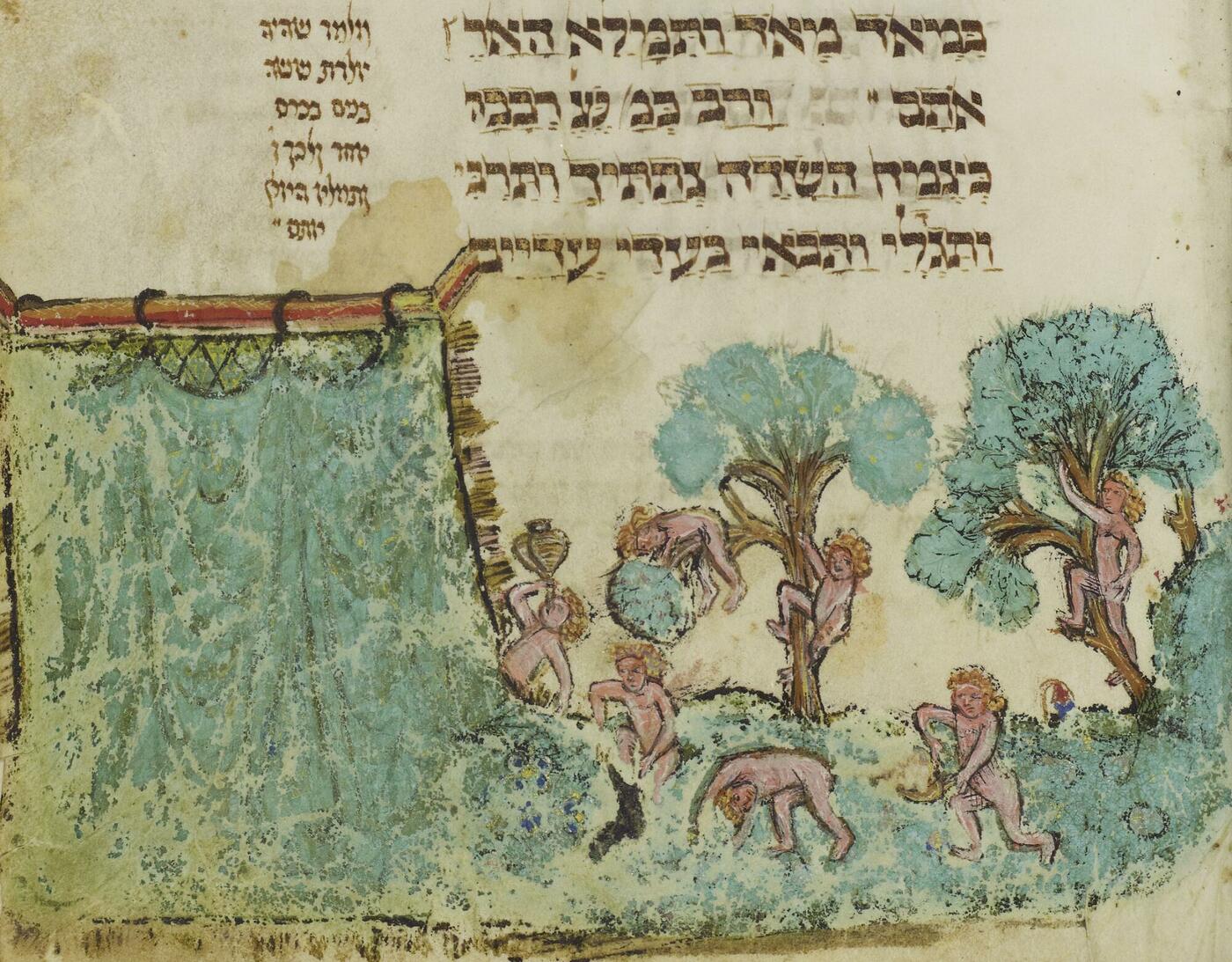Ashkenazi Haggadah
The Haggadah was used at the Seder, the festive meal on Passover eve. There has been a long tradition of illustrating Haggadah manuscripts going back to the late 13th century. The illustrations provide a visual commentary on the text, perhaps prompting participants of the Seder to talk about the story of Exodus.
This 15th-century manuscript is from the Northern European tradition known as ‘Ashkenazi’. The compositions remind us of Christian iconography but reinterpreted in the Jewish context. Some of the scenes pictured are repeated in other Haggadot, but others are unique.
Passover Haggadah
Young woman at the spread Seder table at the beginning of Ha lakhma (This is the Bread of Affliction).
Illustration of the biblical quotation ‘and the Israelites multiplied and increased very greatly, so that the land filled with them.’ (Exodus 1:7) based on midrashic interpretation.
The commentary in the outer margin is embedded into an image of Jonah and the whale.

